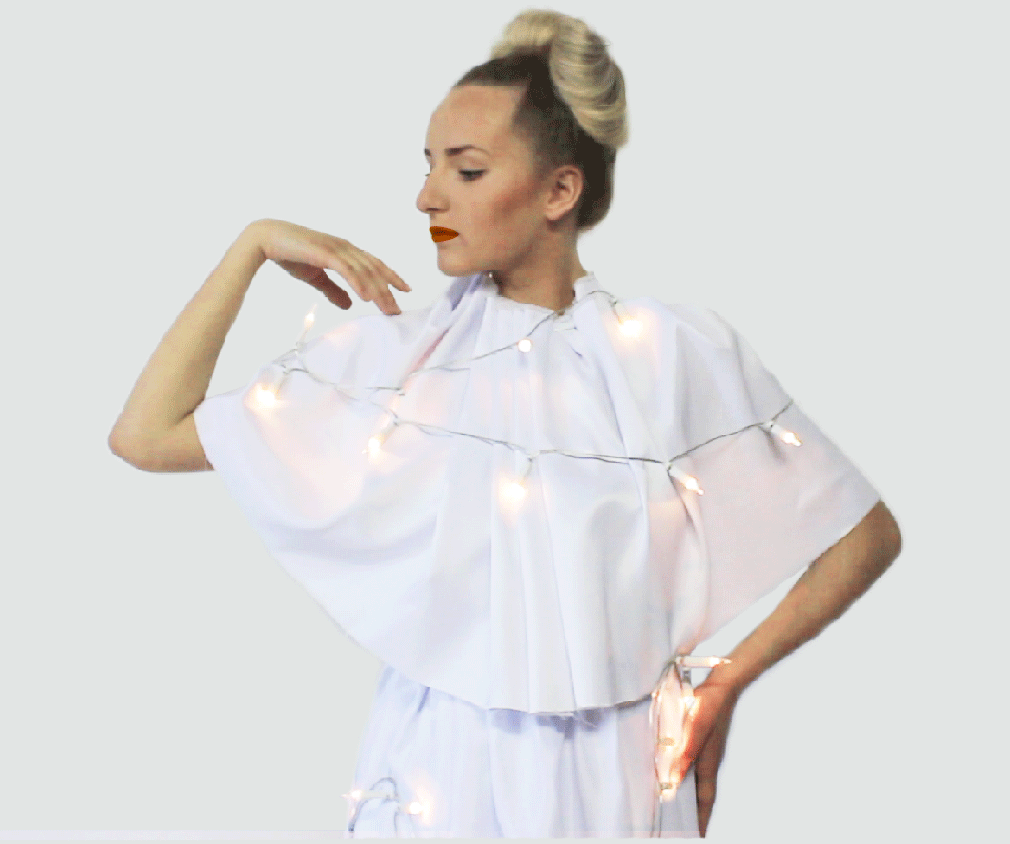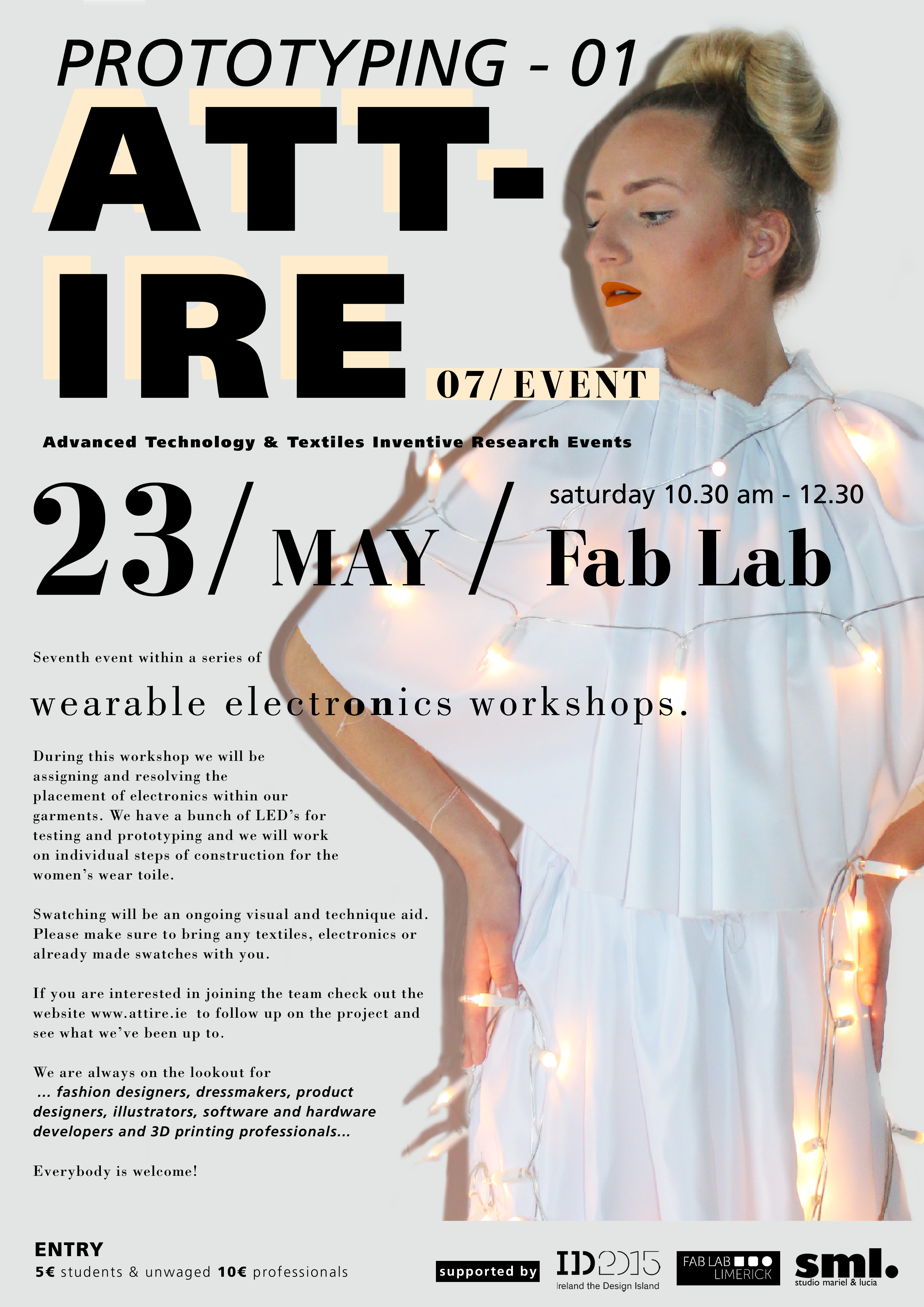PROTOTYPING – 01
We are now right in the swing of solving the women’s wear garment. During our 07 event on Saturday we re-created a section of the RGB array of LED’s swatch and incorporated it into the textile swatch. This was a key step as we had to see how we would manoeuvre the wiring to not disturb the tight fit of the dress. Simultaneously, we were working with the toile to assign the LED placement within our garments. We are also dabbling with the idea to include some geometric 3D printed pieces in form of a detachable or as an extra element to the garment such as a jacket to give it an extra wow factor as it is an exhibition piece.
PROCESS
Earlier in the week the textile swatch was refined using black neoprene fabric, with an additional laser cut perforated texture to the textile tubing carrying the LEDs. With the new textile swatch Dave adequately showed us the exact requirements for wire connections and how they can be manoeuvred for different lengths. The women’s wear toile was also ready made with clever asymmetrical seems to hold the panels and assure it’s tight a fit. Mia drafted the pattern and Marie put the toil together. With this visual we were able to begin figuring out and assigning the LED placement. Whilst looking at the dress in it’s real proportions Rhona and Mariel thought of adding 3D printed inspired origami triangle shapes mimicking the geometry of the dress. This will be cleverly designed as another way for the light to travel.
FINDINGS
We had an informal meeting the previous Thursday to discuss the best method of wiring which would create less bulk and less likelihood of breakage. The conductive thread’s behaviour is difficult to contain, master and it is the most likely to break, it also doesn’t carry enough power needed. The silicone cover wire is for now the best solution, it doesn’t create much bulk and its performance is a lot more manageable.
The new textile swatch proved to be very successful in its design to contain the LED’s and assist an easy fix if needed, flexibility for different lengths of LED strips, room for wiring to be applied and it is visually appealing. The perforated pattern broke the single LED light into 3 smaller lights giving the illusion of having many more LEDs placed. We will continue to experiment with various textures to manipulate the light as it was proven to be a successful technique through out our workshops. The placement of the LED’s presented to be an issue as the individual areas of the toile were to large and some of the shapes were not suitable to include the LEDs grid for efficient programming. We need to be clever with the seems as the more seems the looser the fabric. We worked with the asymmetrical assigned areas within toile and broke it down into smaller parts by adjusting the textile rather than adding more seems . Although some of the areas were not adding up so we will have to revisit the pattern and the toile’s construction. Our best solution is to go back to the drawing board and decide the LED placement first keeping in mind the swatch and its integrity.

